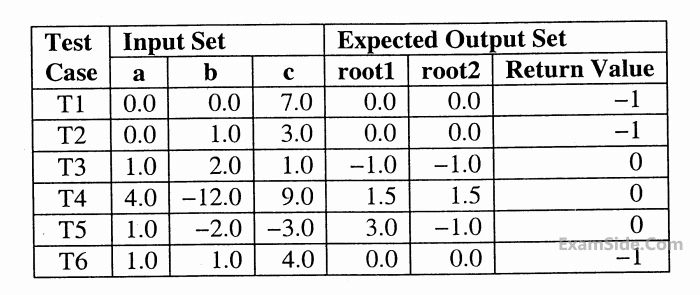$$i)$$ When coefficient $$a$$ is zero or irrespective of discriminate
$$ii)$$ When discriminate is positive.
$$iii)$$ When discriminate is zero
$$iv)$$ When discriminate is negative
Only in cases $$(ii)$$ & $$(iii)$$ the stored roots are valid Otherwise $$0$$ is stored in the roots the function returns $$0$$ when the roots are valid & - $$1$$ otherwise. The function also ensures root $$1$$ $$> =$$ root $$2.$$
int get QuadRoots(float a, float b, float c, float $${}^ * root1$$, float $${}^ * root2$$);
A software test engineer is assigned the job of doing block box testing. He comes up with the following test cases, many of which are redundant

Which one of the following options provide the set of non-redundant tests using equivalence class partitioning approach from input perspective for black box testing?
What is the minimum number of states needed in a $$DFA$$ to recognize $$L$$?
Which of the following statements is not TRUE?